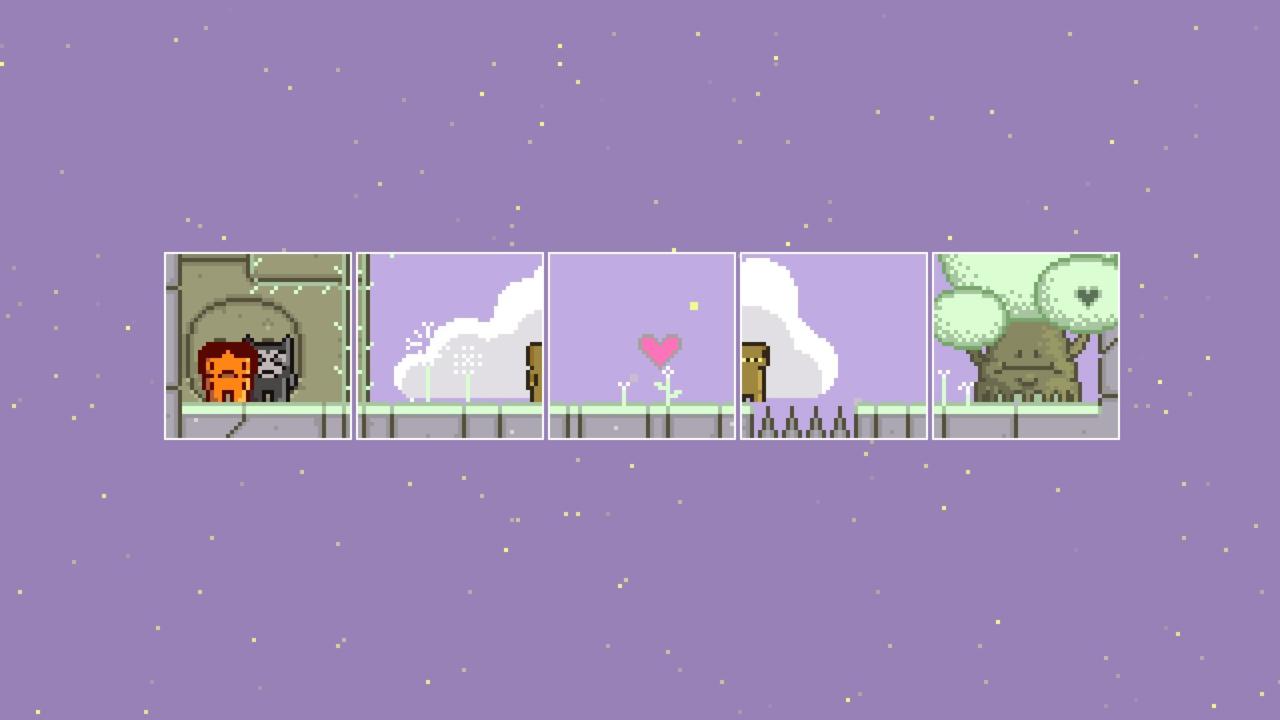Take a piece of paper and draw a simple 2D environment on it, like you might find in an old-school platformer. On one end of the environment is your starting point, and at the other is your goal. Now, take that paper and cut it up into a bunch of smaller pieces, and then shuffle and rearrange them completely, leaving some gaps and creating some overlap between pieces. Can you still trace a path from the beginning of the paper to the end, moving as if the environment were still whole?
This is how you move around in Where Is My Heart, a game that's equal parts simple and disorienting. Move to the right, and you might find yourself in a panel to your left. Jump up, and you might land on the bottom left of the screen. It takes the very simple elements of moving and jumping and makes them far more interesting (and difficult) simply by shifting your perspective, and the result is a puzzle game that's not only unique, but also smart enough not to overstay its welcome.

Your goal in each mazelike mosaic of a stage is not to put the level back together, but rather to guide a family of three lost monsters through the pieces to the goal, collecting hearts along the way. You can switch between them with the tap of a button, which lets you take them into different directions or makes them work together to get past obstacles. (You might need, for instance, to stack them on top of each other.) This basic concept is tricky enough. Levels that would be very simple (not to mention very short) if properly arranged become labyrinths when mixed up like they are. But often, the mere ability to find what direction leads where isn't enough to reach your goal.
In their basic forms, each of these monsters is essentially the same. They all walk and jump at the same speed and same height, and have no special abilities. However, certain levels allow the monsters to evolve into special forms. The brown monster becomes a rabbit that can double jump. The black monster develops the ability to see an alternate landscape, with platforms where there previously were none or holes where there were once walls. The orange monster develops the trickiest (but also the coolest) skill: it can rotate the panels of the level around, which allows it to jump from one panel to another in ways that were previously impossible.

Every level in which some or all of these skills appear is carefully designed to take full advantage of them. Each monster's ability has a purpose, and only by working together do they all get home safely, whether that's done by activating switches unreachable by other monsters or temporarily splitting up and reconvening elsewhere in the stage.
If this sounds like it might hurt your brain, rest assured: it does. It's amazing how disorienting it can be to have your perspective messed with in this way, but it's equally amazing how much you can adapt. You quickly learn to carefully test your movement, stepping just barely out of one frame to try to see if you also show up in another, and you might find yourself frustrated, mentally shifting the mixed-up panels around, trying to make sense of them. There's a very good chance that you (like me) will have to resort to trial and error as you stumble through each stage, but that's ultimately OK. There's no penalty for making a mistake, save a trip back to the beginning of the stage for whichever monster met its untimely end. But with every leap you take that ends up on spikes or in a pool of water, you learn just a little bit about your surroundings.
It's amazing how disorienting it can be to have your perspective messed with in this way, but it's equally amazing how much you can adapt.
Where Is My Heart is a bite-size experience, lasting only a couple of hours (not counting bonus levels or the challenge of collecting every heart in every stage). This is to the game's benefit, though, because it ends just as the gimmick is growing tiresome. There are moments when it's more frustrating than fun--being lost, after all, is rarely a pleasant experience--but even then it's hard not to appreciate how far the developers have taken such a simple idea. If these monsters want heart, this game is full of it.